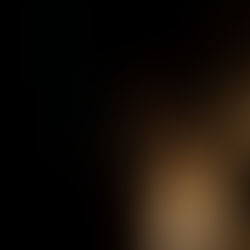
RESEARCH AND CHOREOGRAPHIC PROJECT
CHOREOGRAPHIC PROJECT
The choreographic project of Arquivo Atlântico proposes an affective and sensorial approach to the different materials that compose our research. The research is articulated around different strategies of experimentation and composition that, from the encounter and confrontation with historical documents, texts, images and sounds, seeks to question, deconstruct and reconfigure narratives and visualities that characterize political and social imaginaries of colonial matrix.
Throughout the research process, we worked around a set of materials between the performative, the sound and the visual, where both the aesthetic and political dimensions respond to a search for other creative and compositional logics. Our interest has been in to investigate the poetic dimension of the archives, and exploring how the mechanisms situated in the choreographic practice can allow us to unfold and reconfigure the multiple meanings that each material can contain.
The choreographic project was developed throughout 2022 in residencies at Espaço do Tempo, Mala Voadora, and Cartaxo, and resulted in the piece Abate, premiered on October 29 at Galeria José Tagarro, as part of the regular program of Materiais Diversos.

A B A T E
Abate is a choreographic exercise that explores the sound and visual traces of colonial violence, a movement of inclination, listening and attention to the practices of domination and resistance that make up the legacy of that period. Based on the imagery, sound and textual explorations developed in the context of the Atlântico Archive project, Abate is a hybrid object, which summons both the archival material resulting from our investigation and the affections that emerged throughout our trajectory. Artificial landscapes, broken images, the sound of radios and a heterogeneous set of voices and gestures compose an unstable and constantly changing space, a zone of ruptures, resonances, interferences and resistances that summons a collective past to experience deviations from it. poetics, speculative movements, transfigurations and reinvention exercises.
The word ‘abate’, which could be translated to slaughter in english, evokes the set of destructions and erasures that constitute the colonial history, the incessant attempts to subtract the vitality and strength of everything that escaped a crystallized idea of the world, but also the iconoclastic desire to overthrow the archive as muted institution and an encapsulated portrait of an absurd and violent past that insists on getting back on its feet.
The collection we used for the construction of Abate is composed of a hybrid set of materials, which includes both pieces from historical archives, as well as works in the public domain and original compositions produced in the context of the project. The sound composition for the radios brings together a set of key discourses for understanding the African independence processes and the international pan-Africanist and anti-imperialist movement, as well as phonographic recordings and fragments of Brazilian radio broadcasts. The scenography was built from a reproduction of the original watercolors by Carlo Ferrario for the first staging of Il Guarany, opera by Carlos Gomes, which premiered in 1870 at the Alla Scala in Milan and marks one of the critical moments in the fabrication of the Brazilian identity in the context of the second empire. The texts are, above all, original materials written by us throughout the development of the project.
ABATE
GALERIA JOSÉ TAGARRO 2022
@ SUSANA VALADAS















































